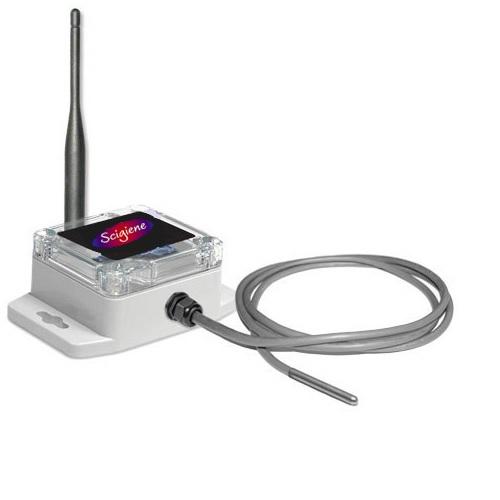Industrial Wireless Sensor Networks: Revolutionizing Smart Industry in 2025

Industrial Wireless Sensor Networks (IWSNs) are transforming the way industries monitor and control their operations by providing seamless, real-time communication among devices and systems. These networks facilitate the remote gathering of critical data such as temperature, pressure, humidity, and vibration, enabling enhanced operational efficiency, improved safety, and predictive maintenance across sectors like manufacturing, energy, mining, and healthcare.
According to Straits Research, the global industrial wireless sensor network segment was valued at USD 6.11 billion in 2024 and is estimated to grow from USD 6.55 billion in 2025 to reach USD 11.36 billion by 2033, growing at a CAGR of 7.13% during the forecast period (2025–2033). This growth reflects the rapid demand for connected, automated industrial environments and the increasing adoption of Industry 4.0 technologies worldwide.
Leading Players and Competitive Analysis
Several multinational technology companies and specialized providers are leading the rise of IWSNs with innovation in hardware, software, and tailored industry solutions:
-
Siemens AG (Germany): Siemens remains a dominant force in industrial automation and sensor networks, pioneering integrated wireless sensor solutions alongside its digital factory initiatives. Its advanced IoT platforms enable seamless device integration, data analytics, and predictive maintenance across manufacturing and energy sectors in Europe, the US, and Asia.
-
Honeywell International Inc. (USA): Honeywell’s industrial wireless solutions focus on optimizing production and safety in oil & gas, chemicals, and manufacturing industries through robust wireless sensor deployments and secure network protocols. The company actively expands presence in North America and Middle Eastern markets.
-
Cisco Systems, Inc. (USA): Cisco delivers scalable wireless communication infrastructure and advanced monitoring tools, enabling industries to enhance operational visibility and efficiency. Its solutions support critical industrial sectors in the Americas and Asia-Pacific regions.
-
ABB Ltd (Switzerland/Sweden): ABB integrates wireless sensor networks as part of its electrification and automation offerings, with particular strength in utilities, factories, and heavy industries globally, including Europe and Asia.
-
Honeywell, Emerson Electric Co., Rockwell Automation (USA), Yokogawa Electric Corporation (Japan), and Schneider Electric (France): These major players provide diversified IWSN products and services—ranging from industrial-grade sensors to cloud-based analytics platforms—aimed at improving safety, productivity, and environmental sustainability worldwide.
Regional Developments and Country-wise Updates
Europe
European industries continue to lead the adoption of advanced IWSNs, with Germany, France, and the Nordics at the forefront. Heavy investment in Industry 4.0 has pushed widespread deployment of wireless sensors in smart factories, energy grids, and environmental monitoring. Siemens and ABB play leading roles, with significant momentum in digital twin integration and cloud analytics.
North America
The USA dominates with its robust ecosystem of technology firms, research institutions, and manufacturing hubs. Honeywell, Cisco, Emerson, and Rockwell Automation have secured a solid footprint by providing scalable wireless infrastructure tailored to oil & gas, automotive, and healthcare industries. The growing emphasis on cybersecurity and data integrity ensures expanding investment in IWSN solutions.
Asia-Pacific
Asia-Pacific sees the fastest growth, driven by industrial expansion in China, India, Japan, and South Korea. Government support for smart manufacturing, energy modernization, and environmental control is fostering increased deployment of wireless sensors. Yokogawa and Schneider Electric have focused on scalable solutions to support the region’s diverse industrial base.
Middle East & Africa
Resource-rich Middle Eastern countries are investing in wireless sensor technologies primarily to improve oil & gas infrastructure monitoring and utilities automation. Honeywell and Siemens have strengthened their regional presence through strategic projects emphasizing operational safety and efficiency.
Technology Trends and Advancements
The industrial wireless sensor network landscape is shaped by several important trends:
-
Wi-Fi and Industrial Wireless Protocols: Wi-Fi accounts for the largest share in IWSN connectivity due to its flexibility, high data rates, and broad compatibility. Protocols such as WirelessHART, ISA100.11a, and Zigbee complement Wi-Fi to provide secure and reliable sensor communication in harsh industrial environments.
-
Cloud Integration and Analytics: Increasingly, IWSNs are connected to cloud platforms to enable advanced data analytics, predictive maintenance, and asset optimization, allowing industries to reduce downtime and improve decision-making.
-
Self-Healing and Scalable Networks: New wireless sensor networks incorporate self-healing capabilities, which automatically reroute data transmission if nodes fail, ensuring reliable performance in complex industrial settings.
-
Energy Efficiency and Battery Life: Long-lasting battery solutions and energy harvesting technologies are being developed to extend the operational time of wireless sensors, minimizing maintenance needs and overall cost.
-
Security Enhancements: With rising cybersecurity threats, industrial wireless systems implement end-to-end encryption, network segmentation, and continuous threat monitoring to protect sensitive industrial data.
-
Industry-specific Customization: Tailored sensor arrays for mining safety, food & beverage hygiene monitoring, and precision manufacturing quality control continue to gain traction.
Latest News and Industrial Highlights
-
Siemens announced new cloud-enabled sensor kits integrated with AI-driven analytics in early 2025, enhancing real-time process monitoring for European factories.
-
Honeywell revealed expansion plans for its Middle East wireless network deployments focused on oil refining and petrochemical plants, incorporating advanced cybersecurity measures.
-
Cisco launched upgradable industrial-grade wireless nodes in 2025, aimed specifically at automotive and healthcare sectors in North America and Asia-Pacific.
-
Amidst growing sustainability efforts, multiple firms, including ABB and Schneider Electric, introduced energy harvesting sensor solutions reducing battery dependency in large-scale industrial networks.
Article Summary
Industrial wireless sensor networks are revolutionizing modernization efforts across global industries. Enabled by advances in Wi-Fi connectivity, cloud analytics, and robust security, IWSNs drive smarter, safer, and more efficient operations worldwide. Leading companies in Europe, North America, and Asia-Pacific continue to introduce innovative solutions supporting Industry 4.0 and beyond.
- Vibnix Blog
- Politics
- News
- Liberia News
- Entertainment
- Technology
- Educação
- Art
- Causes
- Crafts
- Dance
- Drinks
- Film
- Fitness
- Food
- Jogos
- Gardening
- Health
- Início
- Literature
- Music
- Networking
- Outro
- Party
- Religion
- Shopping
- Sports
- Theater
- Wellness


